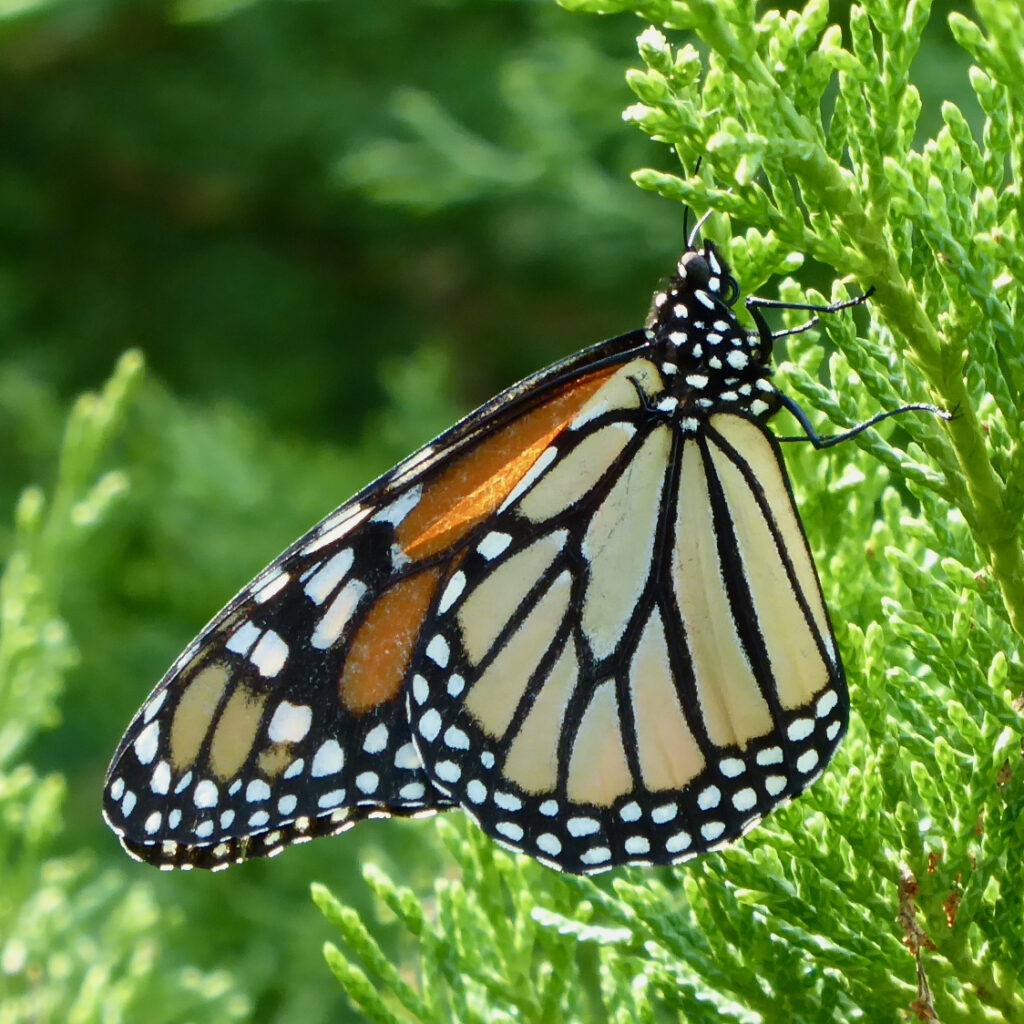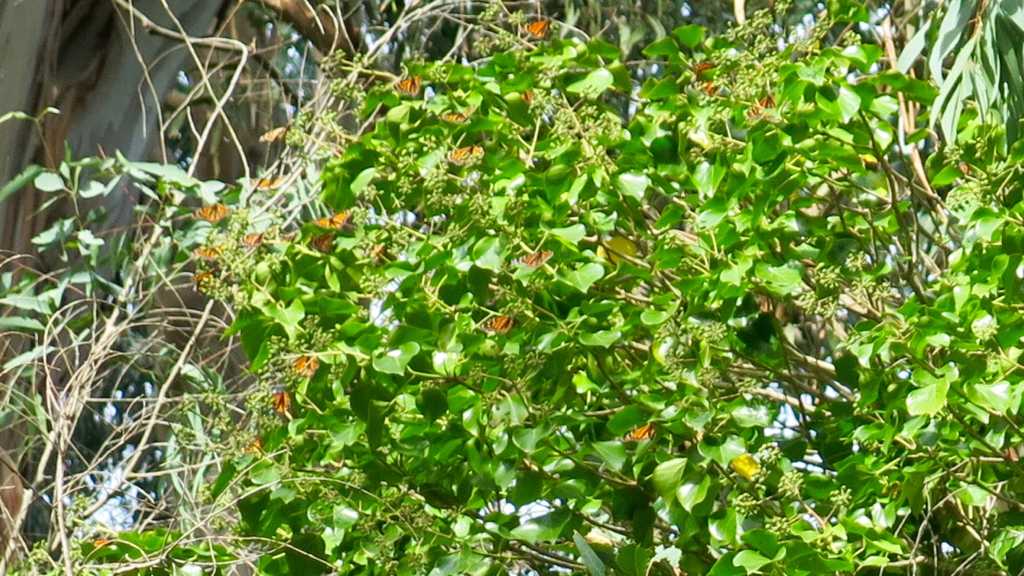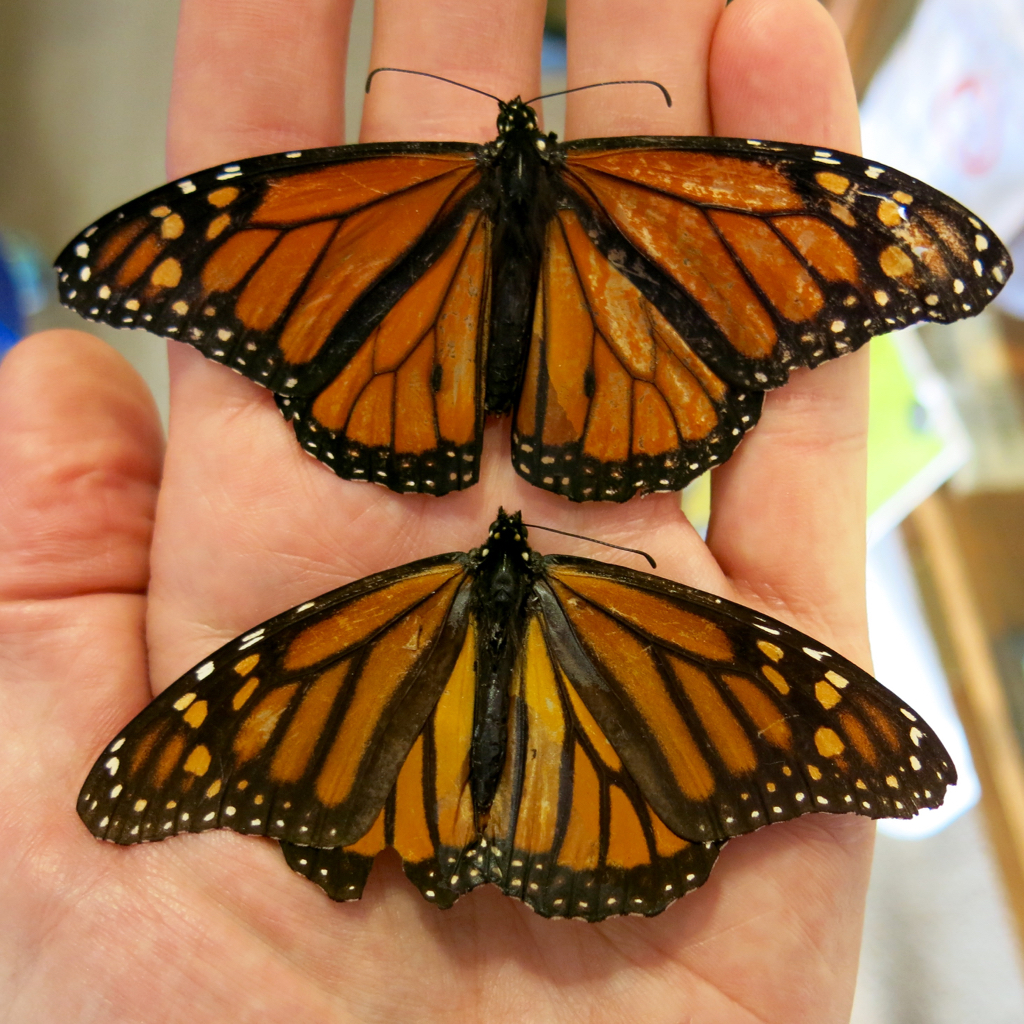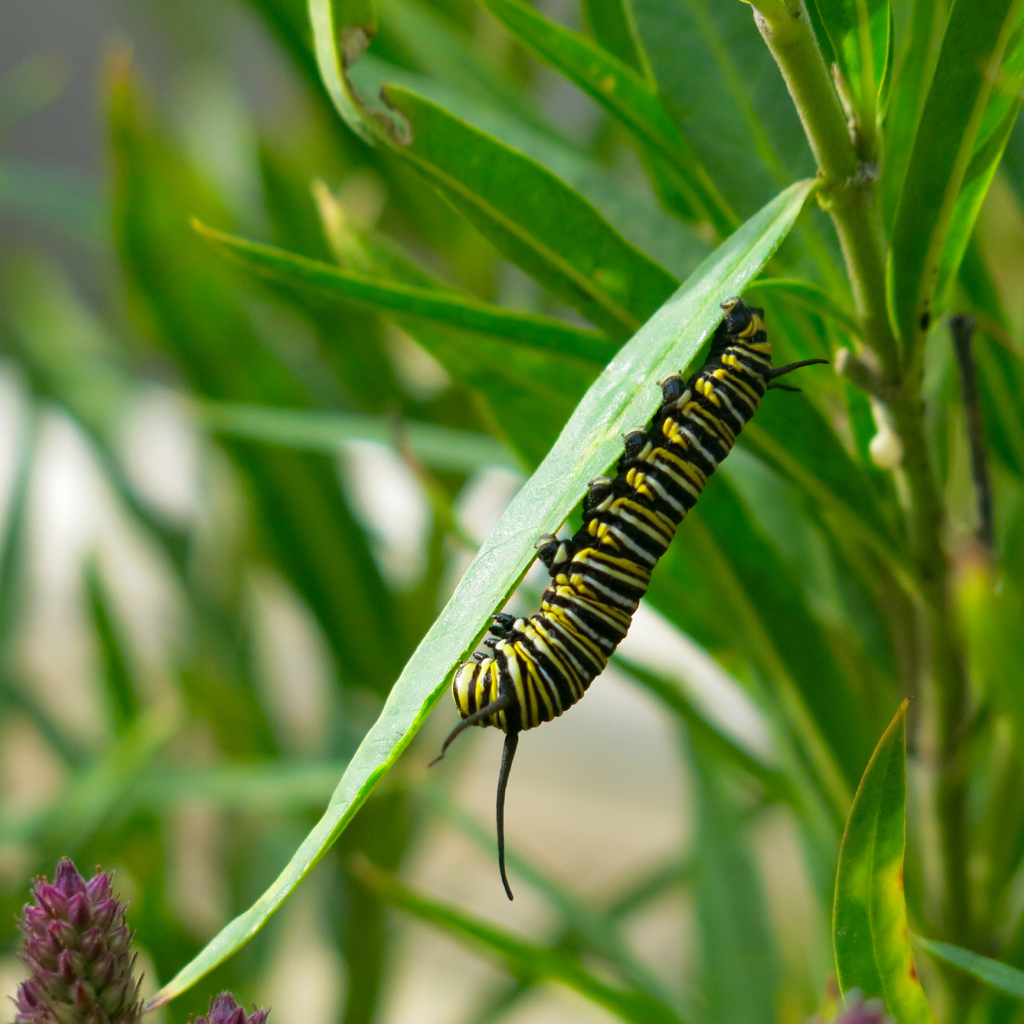
My younger sister and I saw this Monarch butterfly in the gardens at Minuteman National Historical Park this afternoon.
Yet Another Unitarian Universalist
A postmodern heretic's spiritual journey.

My younger sister and I saw this Monarch butterfly in the gardens at Minuteman National Historical Park this afternoon.
Ed, whom we met through Sacred Harp singing, is a docent at Natural Bridges State Park, where migrating Monarch butterflies spend several months in the winter. Months ago he had offered to show us the Monarchs, and today we took him up on his offer.
Many of the Monarchs roost near the visitor center, down in a hollow where Blue Gum Eucalyptus trees grow. We walked into the grove at 11:40; the sun was well down into the hollow, and the temperature was rising into the mid-50s F. I looked up, and saw dozens of Monarchs soaring about twenty feet above me. Many more were roosting in the trees, and in the ivy growing up the trees.

Ed pointed out three large clusters of Monarchs, on three nearby Eucalyptus branches. He had a scope, which he focused on one of the clusters of Monarchs. The scope took in about half the cluster, and it was a spectacular sight: I counted well over a hundred butterflies roosting, all closely packed together. They were mostly showing the dull orange of the undersides of their wings, but every once in a while one would spread its wings, making a momentary spot of vivid bright orange.

The park has a collection of dead Monarchs, and using two dead insects Ed showed us the difference in the wing patterns of the male and female Monarchs: males have a distinct black spot on each hindwing; females have heavier black veining on their wings.

Near the visitor’s center, there’s a small butterfly garden, with two different species of milkweed growing. The caterpillars of Monarch butterflies will eat only milkweed. Sure enough, there were two caterpillars feeding on one of the milkweed plants.
It was a pretty fabulous way to spend a morning.
Info about visiting Natural Bridges State Park and the Monarchs here.